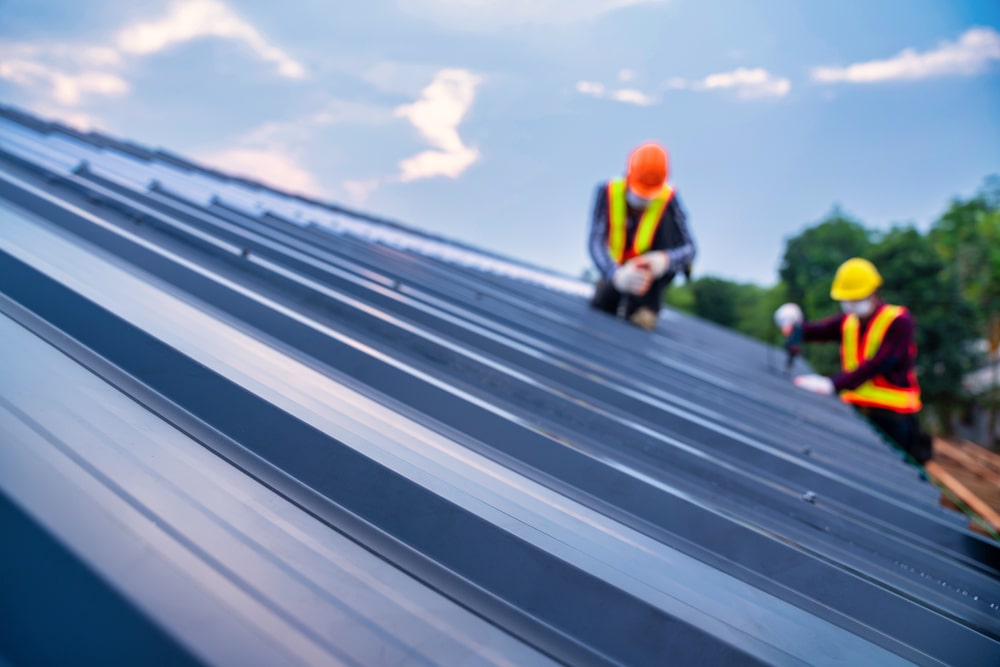At Pinnacle Home Improvements, we specialize in a wide range of home improvement services, including expert roofing services. As such, our team of experts is highly skilled in the installation and maintenance of metal roofs, and we know all the metal roof benefits to tell you about to get you excited for this option. Keep reading to learn more about metal roof installation, metal roofing maintenance tips, and more.
Everything You Need to Know About Metal Roofing: Advantages and Considerations
Metal roofing stands as a durable and sustainable option for residential and commercial buildings alike. It offers a combination of longevity, aesthetics, and energy efficiency that appeals to a wide range of preferences and requirements. As awareness about the environmental impact of building materials grows, metal roofing emerges as a favorable choice due to its recyclability and reflective qualities that contribute to better energy conservation.
Selecting a roofing material involves considering various factors such as cost, durability, installation, and maintenance. Metal roofing excels in these areas, with various options available in terms of materials, including steel, aluminum, copper, and zinc. Each material brings its own set of advantages, from the corrosion resistance of aluminum to the patina effect copper develops over time, which can enhance the character of a building.
Installation of metal roofing is a critical process that requires skilled professionals to ensure that the benefits of the material are fully realized. Proper installation minimizes the potential for issues such as leaks and contributes to the overall performance and longevity of the roof. Maintenance requirements for metal roofs are typically minimal compared to other roofing types, though they do vary based on the type of metal and the environment in which they are installed.
Metal Roofing Options
When considering a metal roof, homeowners have a variety of materials and styles to select from. Pinnacle Home Improvements provides a comprehensive range of metal roofing options tailored to various aesthetics and functional needs.
Materials and Styles
Metal roofing comes in a variety of materials, each with distinct advantages:
- Aluminum: Lightweight and resistant to corrosion, ideal for coastal climates.
- Steel: Commonly used due to its durability, it comes in three types: galvanized, galvalume, and weathering steel.
- Copper: Offers a long lifespan and develops a unique patina over time.
- Zinc: Highly durable and has a lower melting point, which contributes to energy efficiency.
- Tin: Rarely used nowadays but was historically appreciated for its affordability and decent lifespan.
The styles of metal roofing include:
- Standing Seam: Features long, sleek panels that interlock to conceal fasteners, providing a modern look.
- Metal Shingles or Tiles: Mimic traditional shingle or tile designs, suitable for those looking for a classic aesthetic.
- Corrugated Panels: Recognizable by their wavy pattern, they offer a rustic appearance and are often used for agricultural buildings.
- Metal Slate: Looks like natural slate but is lighter and less expensive.
Pinnacle Home Improvements Offerings
Pinnacle Home Improvements offers a wide range of these metal roofing options, focusing on quality and customer satisfaction. Our offerings include:
- Customization: Panel lengths, colors, and finishes customized to the homeowner’s preferences.
- Installation: Professional installation by experienced technicians.
- Warranties: Long-lasting and comprehensive warranties on materials and workmanship.
We strive to provide a metal roofing solution that meets the specific needs and expectations of their clients, ensuring all installations are conducted with precision and care.
Benefits of Metal Roofing
Metal roofing stands out as a premium choice among roofing materials due to its remarkable durability and energy efficiency. These attributes not only protect homes and buildings but also offer long-term savings.
Durability and Longevity
Metal roofing is renowned for its exceptional durability. It typically lasts 40 to 70 years, depending on the material, compared to 12-20 years for traditional asphalt shingles. This longevity stems from metal’s resistance to:
- Wind: It can withstand wind gusts of up to 140 miles per hour.
- Corrosion: Many metal roofs have protective coatings to prevent rust.
- Impact: Resilient against hail and other impacts.
- Fire: Metal roofing materials are noncombustible, with a Class A fire rating.
Energy Efficiency
Metal roofs reflect solar radiant heat, which can reduce cooling costs by 10-25%. Their energy-efficient features include:
- Reflective Coatings: These coatings enhance the reflection of sunlight.
- “Cool Roofing” Products: Some metal roofs are designed to re-emit absorbed solar radiation.
Metal’s thermal emissivity leads to lower energy consumption, especially in areas with high temperatures, resulting in significant energy savings over time.
Metal Roofing vs. Traditional Materials
When evaluating roofing options, homeowners and builders often weigh the advantages of metal roofing against traditional materials like asphalt shingles, wood shakes, and clay tiles.
Comparative Analysis
Metal roofing presents a diverse range of options compared to traditional materials — each exhibiting unique strengths and weaknesses. Durability is a hallmark of metal roofing; it can withstand extreme weather conditions and often lasts 40-70 years. In contrast, asphalt shingles — a traditional choice — typically have a lifespan of 15-30 years.
| Feature | Metal Roofing | Traditional Materials |
| Lifespan | 40-70 years | 15-30 years |
| Weather Resistance | High (wind, hail, fire) | Moderate to high |
| Maintenance | Low | Moderate to high |
| Energy Efficiency | High (reflective coatings) | Variable |
Metal roofs can also come in a range of styles and colors to mimic traditional materials, providing aesthetic versatility. They are also notable for their energy efficiency, as they typically include reflective coatings that can lower cooling costs.
Cost-Benefit Considerations
The upfront cost of a metal roof tends to be higher than traditional materials, reflected in both material and installation costs. However, one should consider the long-term savings due to metal roofing’s lower maintenance needs and durability. Over time, a metal roof’s investment can become cost-effective due to reduced replacement and repair costs.
| Cost Type | Metal Roofing | Traditional Materials |
| Initial Investment | Higher | Lower |
| Maintenance | Lower | Higher |
| Long-term Savings | Potential for more | Less |
The total cost must be analyzed over the roofing material’s expected lifespan to accurately assess the return on investment. Although the initial expense for metal roofing may be higher, it potentially offers more value over time due to reduced energy bills and maintenance costs compared to traditional materials that may require more frequent replacement or repair.
Installation Process
The installation of metal roofing requires meticulous planning and precision execution. This section offers a structured guide through the initial preparations and the specific methods employed in the actual installation.
Pre-Installation Steps
It is crucial to begin with a thorough inspection of the existing roof structure to ensure its integrity. This includes checking rafters and sheathing for stability and rot. Next, precise measurements of the roof are taken to determine the quantity of materials needed. The following list encapsulates critical steps that must be taken before metal panels are installed:
- Site Inspection: Assessment of the roof structure’s ability to support metal roofing.
- Measuring: Accurate determination of roof dimensions.
- Material Delivery: Ensuring all necessary components, such as panels, fasteners, underlayment, and flashing, are on-site and accounted for.
- Protective Measures: Setting up safety equipment to prevent accidents during installation.
Installation Techniques
Installing metal roofing involves a series of detailed steps, requiring specialized techniques for secure and effective coverage. Initially, the underlayment is rolled out and secured to the roof deck, providing an additional layer of protection from the elements.
- Underlayment Application:
- Rolls of underlayment are laid horizontally across the roof deck, starting from the edge.
- Overlap each subsequent layer to prevent leaks.
Next, the metal panels are aligned and fastened to the roof structure, with careful attention to the manufacturer’s guidelines for overlap and securing.
- Panel Installation:
- Panels are laid out, ensuring proper alignment with the roof’s edge.
- Fastening is done using screws or clips, as per manufacturer’s specifications for spacing and technique.
The installation of flashing around roof penetrations, edges, and ridges constitutes the final step, ensuring a watertight seal.
- Flashing and Trim:
- Apply flashing around vents, chimneys, and other penetrations to prevent water ingress.
- Install trim pieces at corners, eaves, and ridges for a finished look.
It’s important that each metal panel is sequentially installed and securely fastened to create a cohesive and weather-resistant roofing system.
Choosing a Roofing Contractor
Selecting the right roofing contractor is critical when installing a metal roof. They should have the expertise, experience, and credentials necessary to deliver a high-quality installation that stands the test of time.
Contractor Credentials
The credentials of a roofing contractor are indicative of their capability to properly install metal roofing. Prospective clients should verify the following:
- Licensing: Ensure that the contractor is licensed to operate in your area. A valid license is a basic requirement and signifies that they meet the local regulations and industry standards.
- Insurance: The contractor should carry both liability insurance and workers’ compensation insurance. This protects homeowners from potential liabilities in case of accidents or damage.
- Experience: Look for contractors with substantial experience in metal roofing. They should have a portfolio of completed projects and references to back up their claims.
- Manufacturer Certifications: Preferably, the contractor should be certified by one or more roofing manufacturers, which shows that they are trained in the specific installation techniques required for those products.
Evaluation Criteria
When evaluating potential contractors, homeowners should consider the following key points:
- Detailed Quotations: Contractors should offer a thorough and detailed quote for the roofing project, breaking down costs for materials, labor, and additional services.
- Quality of Materials: Inquire about the type and quality of metal used. Contractors should provide materials that offer durability, warranty, and comply with industry standards.
- Communication: The contractor must communicate clearly and promptly. A contractor who listens to client needs and addresses concerns is preferable.
- Timeline: Ask for a projected timeline for project completion. Reliable contractors provide a realistic timeline and adhere to it.
- Warranty: Contractors should offer a warranty for their workmanship. Warranties indicate confidence in their work and provides long-term value.
- Past Projects and References: Request photos of past projects and contact information for references. This allows assessment of the contractor’s previous work and feedback from former clients.
Selecting a contractor for a metal roofing project should be based on a combination of their Professional credentials, past performance, communication practices, the quality of materials they use, and their willingness to stand behind their work.
Maintenance and Care
Maintaining a metal roof is crucial for maximizing its lifespan and functionality. Proper care involves routine checks and upkeep to ensure the integrity of the roofing material.
Regular Inspection
Homeowners should perform bi-annual inspections of their metal roofs to spot any potential issues early on. Checks should focus on:
- Seams and edges: These areas are prone to separation and leaks.
- Surface damage: Look for scratches, dents, or punctures that could lead to rust.
- Fasteners and sealants: Ensure that screws are tight and sealants are not cracked or peeling.
- Rust formation: Any signs of rust should be addressed immediately to prevent further corrosion.
Inspection after extreme weather events, such as hail or heavy snow, is also crucial as they can inflict significant stress on the roof.
Routine Upkeep
Ongoing maintenance tasks are essential to prolong the functional life of a metal roof. These include:
- Cleaning Gutters: Keep gutters and downspouts clear of debris to prevent water pooling.
- Removing Debris: Gently clear away any leaves, branches, or other debris from the roof’s surface.
- Washing the Roof: Use water and a mild detergent to clean the roof periodically, avoiding abrasive tools.
- Paint Touch-ups: If the coating is chipped or faded, apply touch-up paint compatible with the metal and original finish.
- Preventative Measures: Trim overhanging branches to reduce debris and prevent scratches.
It is advisable for individuals to either hire professionals or use proper safety equipment if they choose to conduct maintenance themselves. Remember that Pinnacle Home Improvements is here for you to handle your metal roofing projects.








